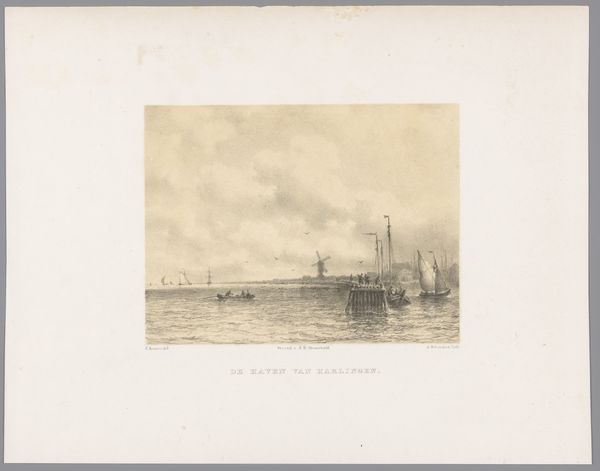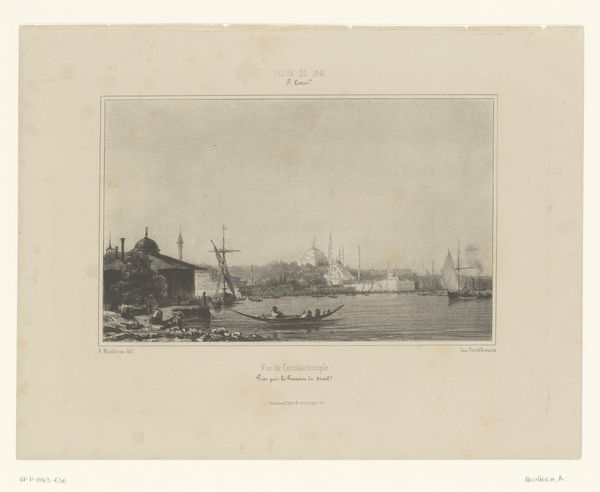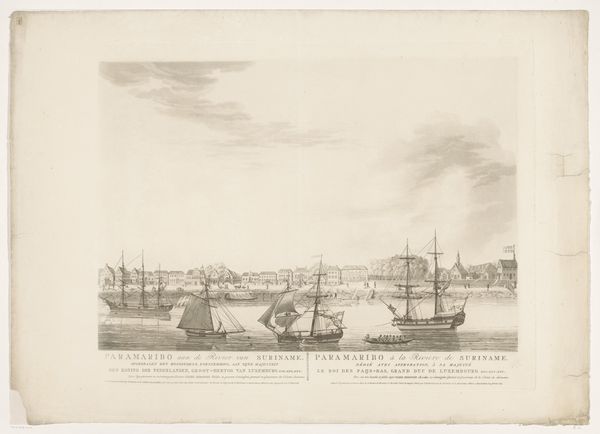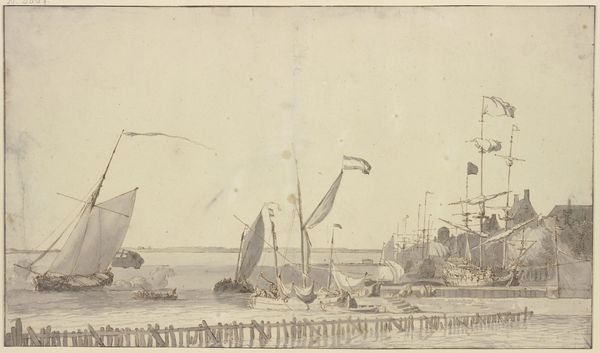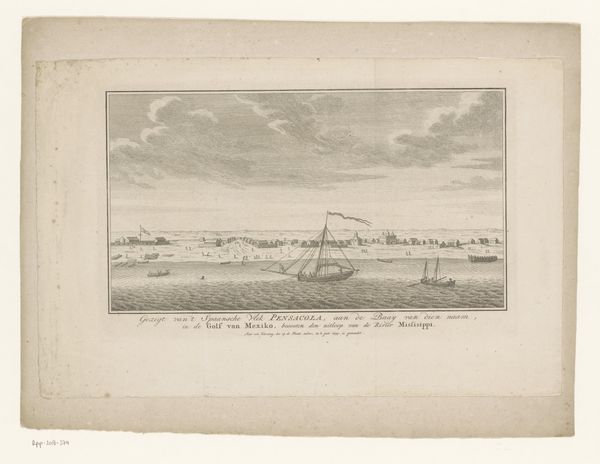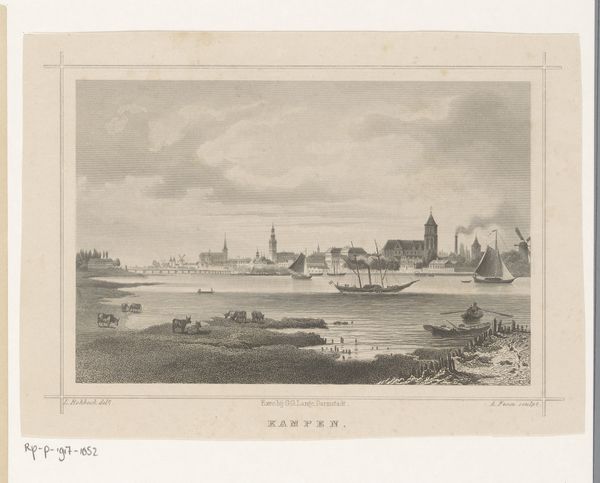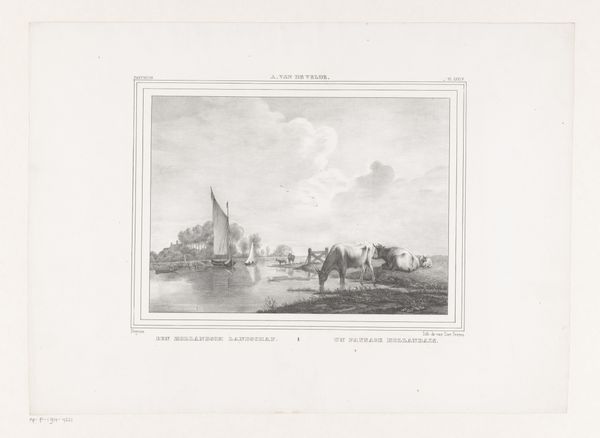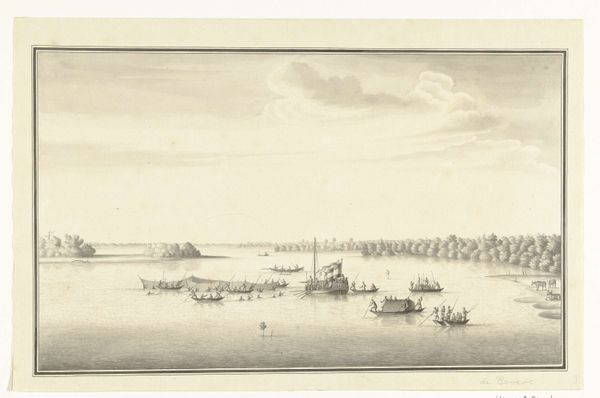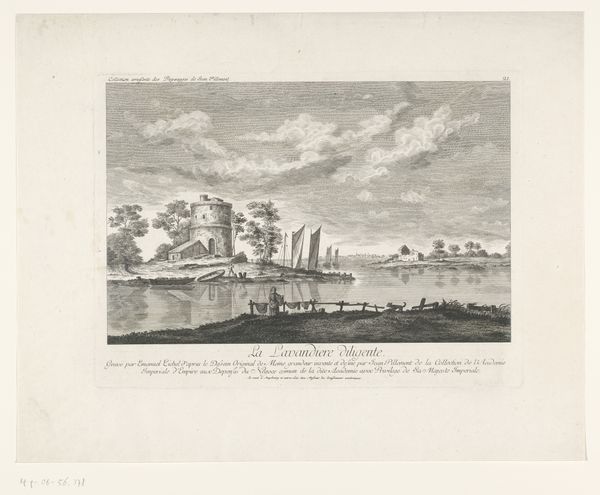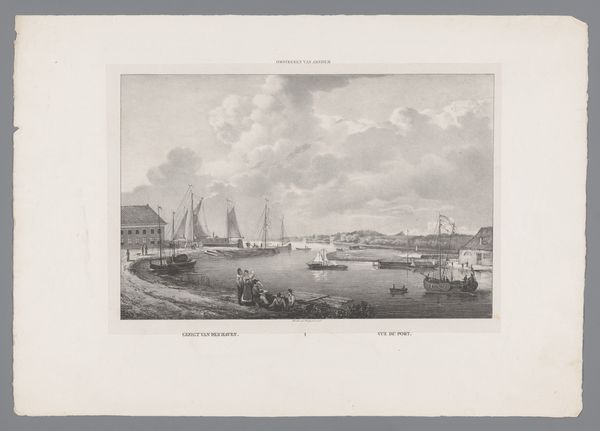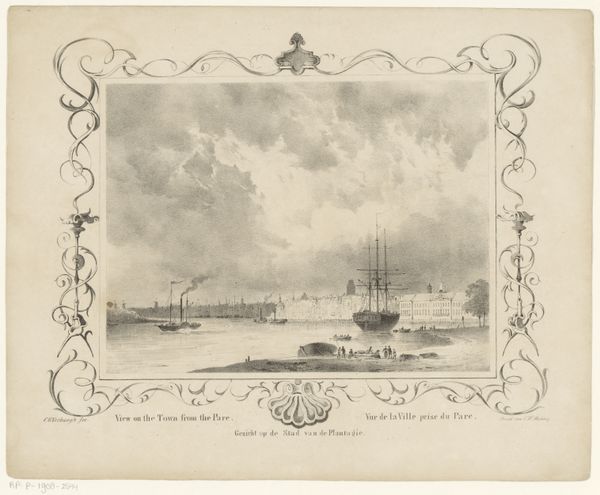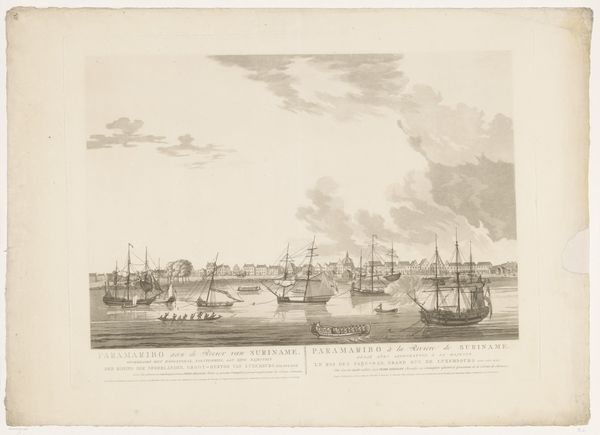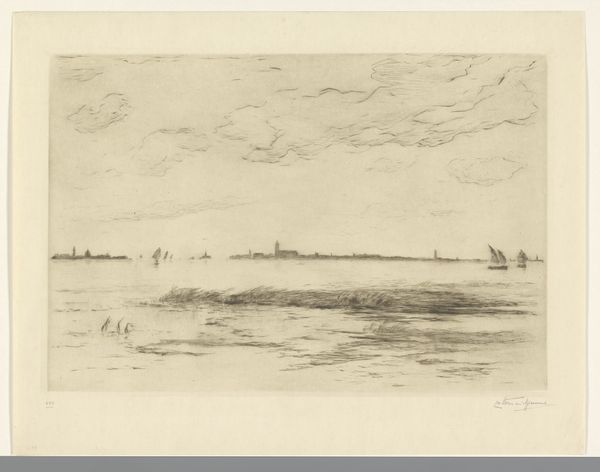
print, etching, engraving
#
neoclacissism
# print
#
etching
#
landscape
#
cityscape
#
engraving
Dimensions: height 270 mm, width 401 mm
Copyright: Rijks Museum: Open Domain
Curator: Looking at this print, “Vertrek van een boot bij de scheepswerf (blad rechts),” created around 1786 by A.J. Pelletier, I’m struck by how clearly it adheres to the Neoclassical ideals. There's such a composed order to the scene. Editor: It's so calm. It makes me feel calm and distant, but in a pleasant, reflective way. I am quite drawn to the textures suggested by the various applications of etching and engraving to produce these shades of gray. Curator: Absolutely. The cityscape receding into the hazy distance creates this lovely, measured vista that speaks of progress, commerce, and control over nature. The receding ships act as powerful, yet simple symbols. Editor: It's interesting to me how the shipbuilding materials—the wood, the metal, the ropes used—are absent in the immediate picture yet present by their products’ final existence out on the water. What was being launched from those ships and what materials were moved after completion? The economy of extraction seems intentionally invisible to these onlookers in their Sunday best atop that fortification. Curator: That absence feels quite intentional to me, highlighting how industry could integrate within a certain framework for an ordered, prosperous civic life in its visual message. The choice to depict the scene from an elevated viewpoint reinforces the controlling gaze. I think viewers standing atop a newly renovated city defense structure could reflect a degree of safety, prosperity, and patriotism. Editor: Maybe. To me, they seem to be watching a transition from something raw and made into something useful. This distance reminds me of looking down at an assembly line, where labor turns into product, consumption and its location distanced through image production in printed form, to be consumed in another fashion altogether. Curator: That's a valid point. I agree it presents labor, especially perhaps grueling physical labor, in an indirect, mediated manner. However, I read these viewers mostly as a signal towards a narrative of aspiration to be engaged with the economy, however passively it occurs. Editor: Yes, perhaps it's that aspiration that draws the calm observer into being further dislocated and involved within global commerce. Either way, it’s interesting to consider those layered meanings woven within these lines.
Comments
No comments
Be the first to comment and join the conversation on the ultimate creative platform.
